Abstract
Causes of birth asphyxia and trauma were determined in the 208 most severely affected infants of 10,995 consecutive live births; 159 infants had cerebral disturbances, 39 had fractures and palsies, and 10 had fractures or palsies in addition to cerebral disturbances. Most frequent causes of birth asphyxia and trauma were: prolonged labour, midforceps or breech delivery in full-term infants; abruption placentae, difficult breech delivery, and maternal sedation in premature infants; and unattended precipitate deliveries in immature infants. Asphyxia following normal labour and delivery usually occurred in infants with fetal malnutrition.
Improved obstetrical management with more frequent use of Cesarean section delivery might have been of value in preventing much of this fetal injury.
Asphyxia and trauma due to complications of delivery were twice as frequent on the ward as on the private service. This may have been due in part to a lower Cesarean section rate on the ward service. A monthly review of birth asphyxia and trauma is recommended to help maintain a high standard of obstetrical practice.
Full text
PDF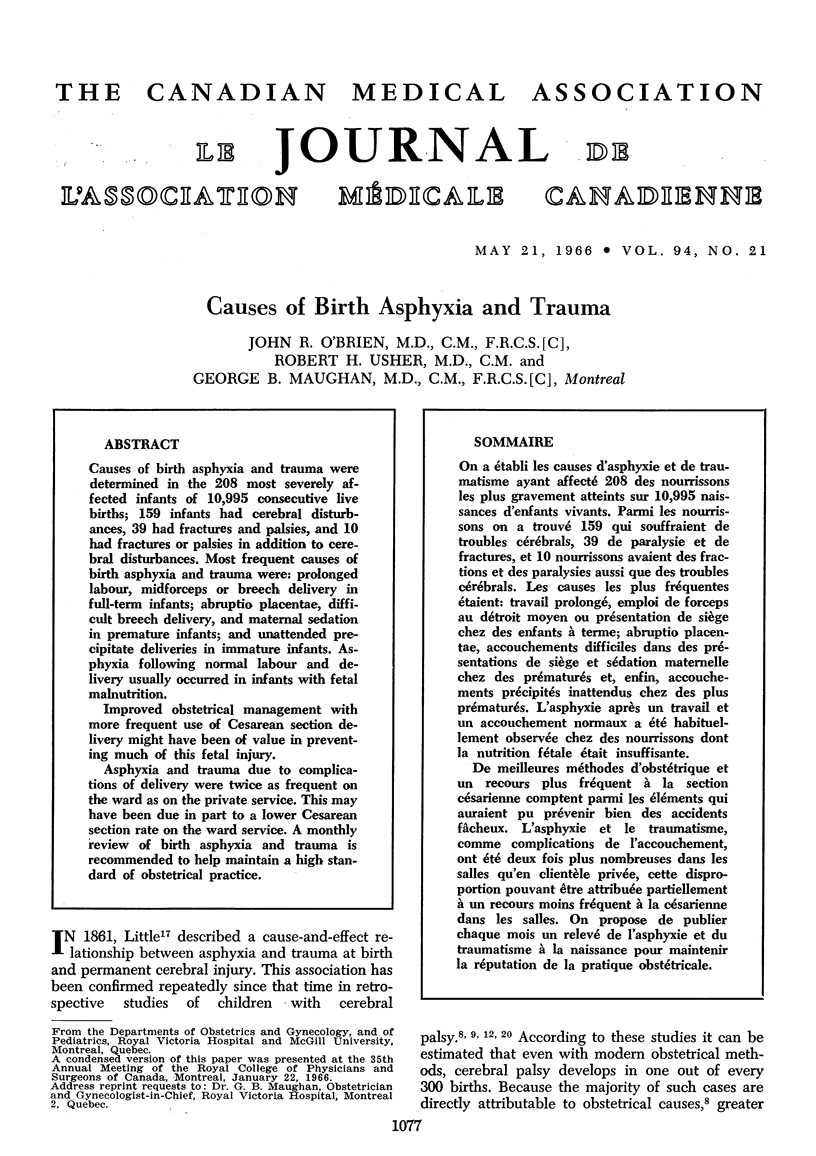
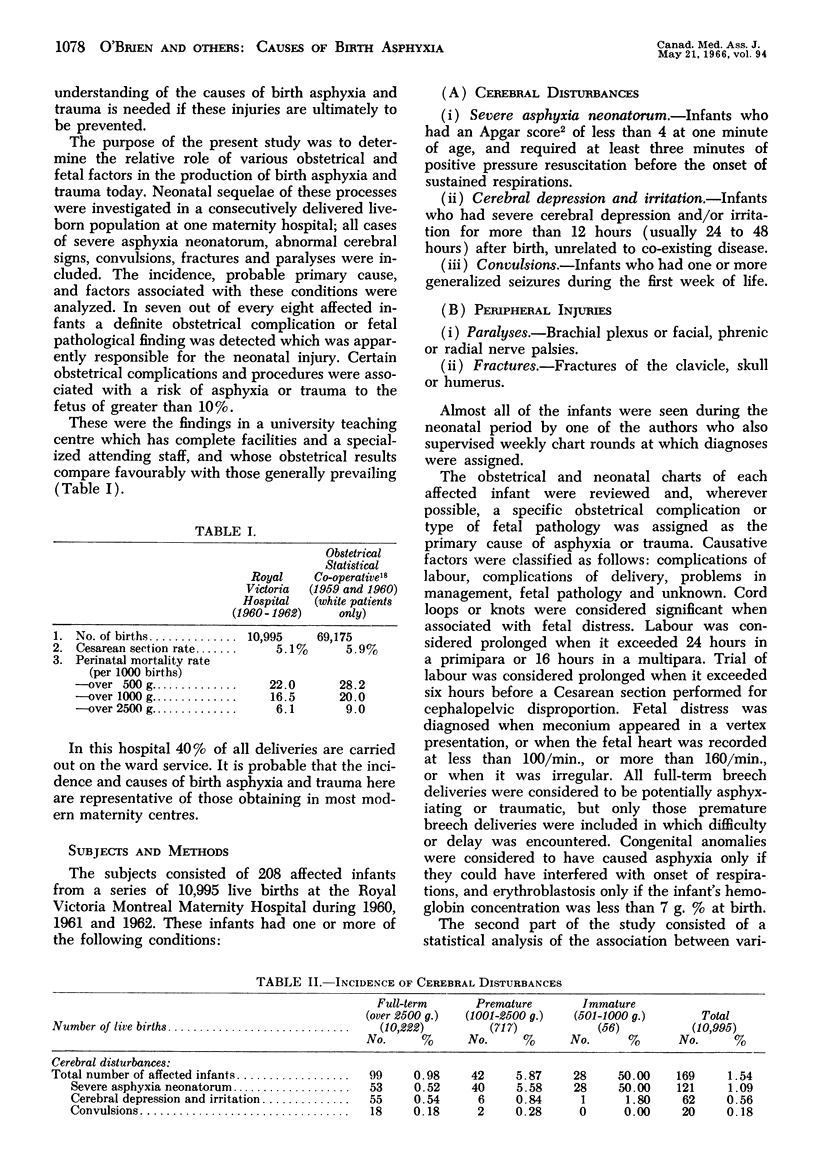
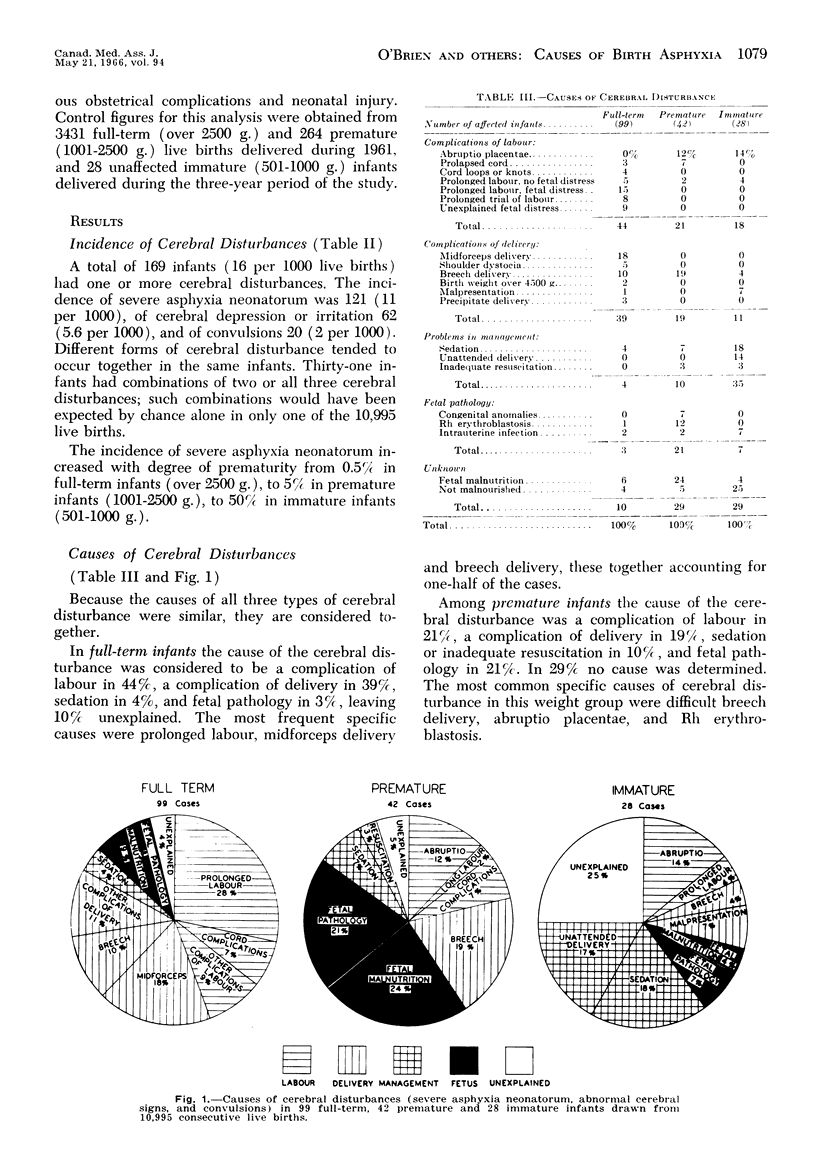
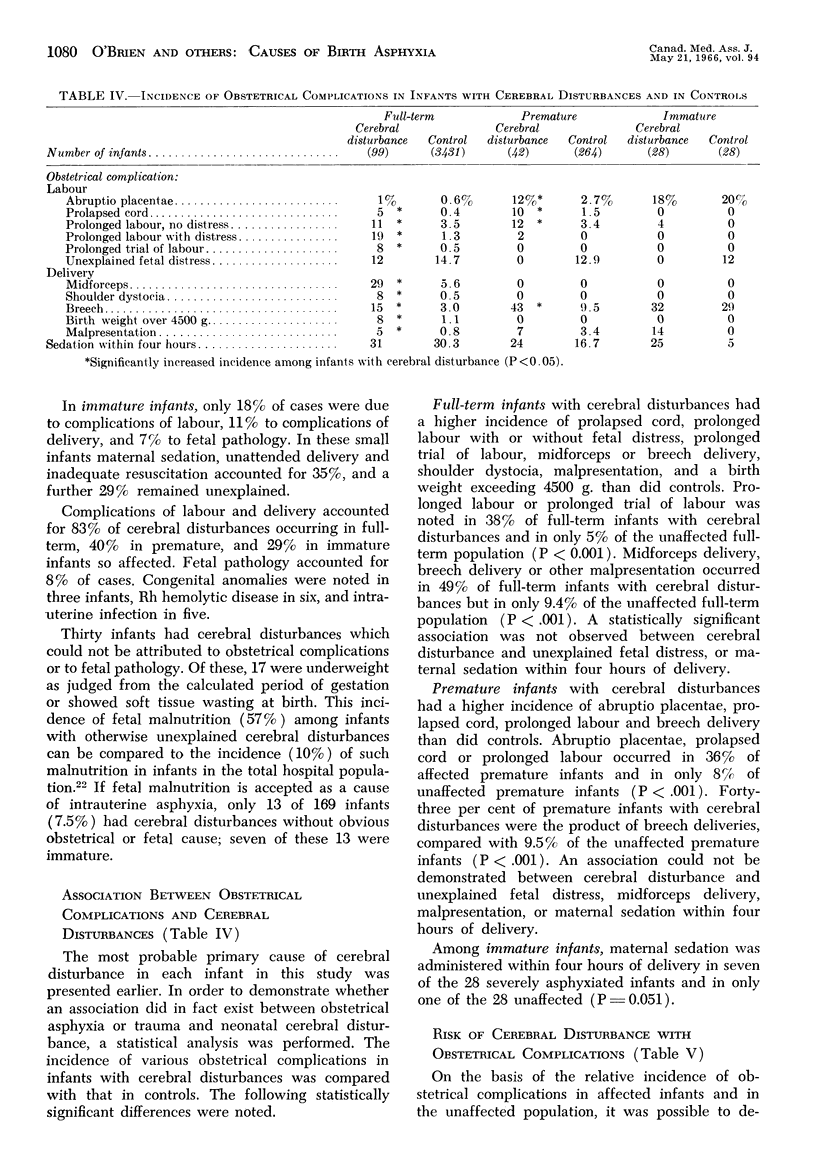
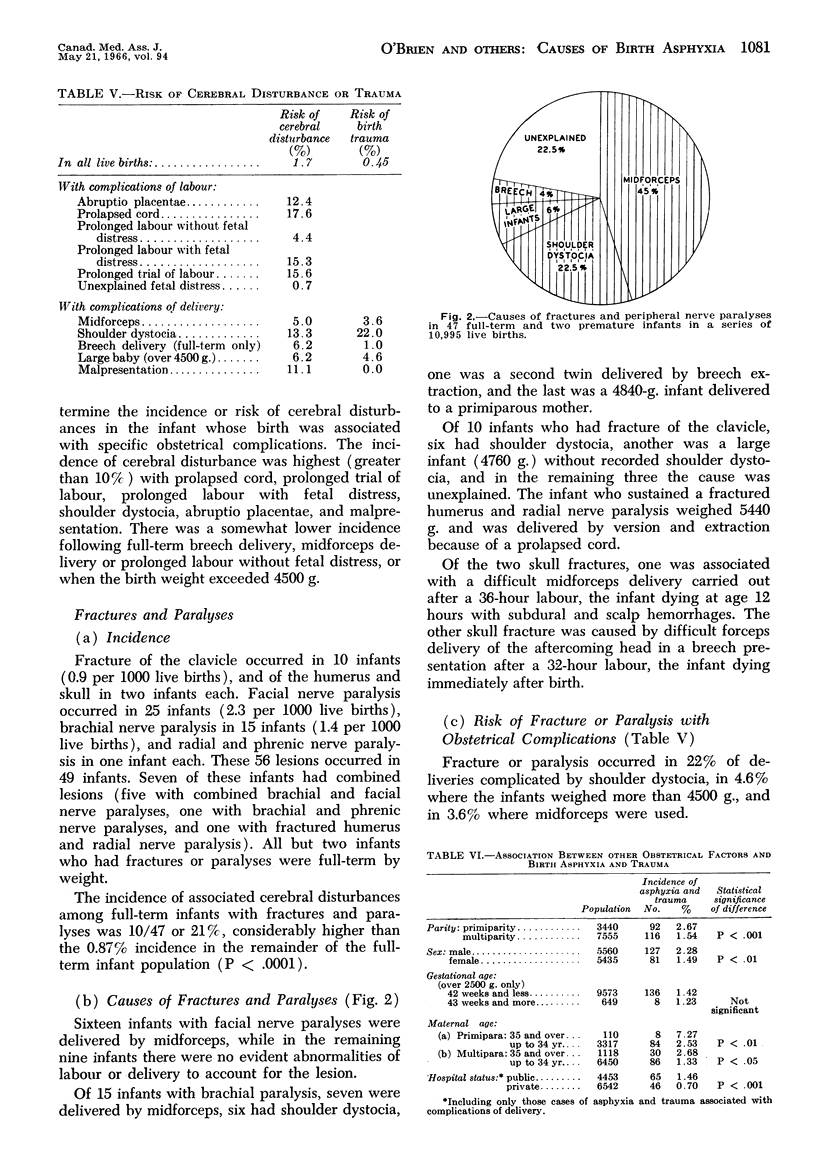
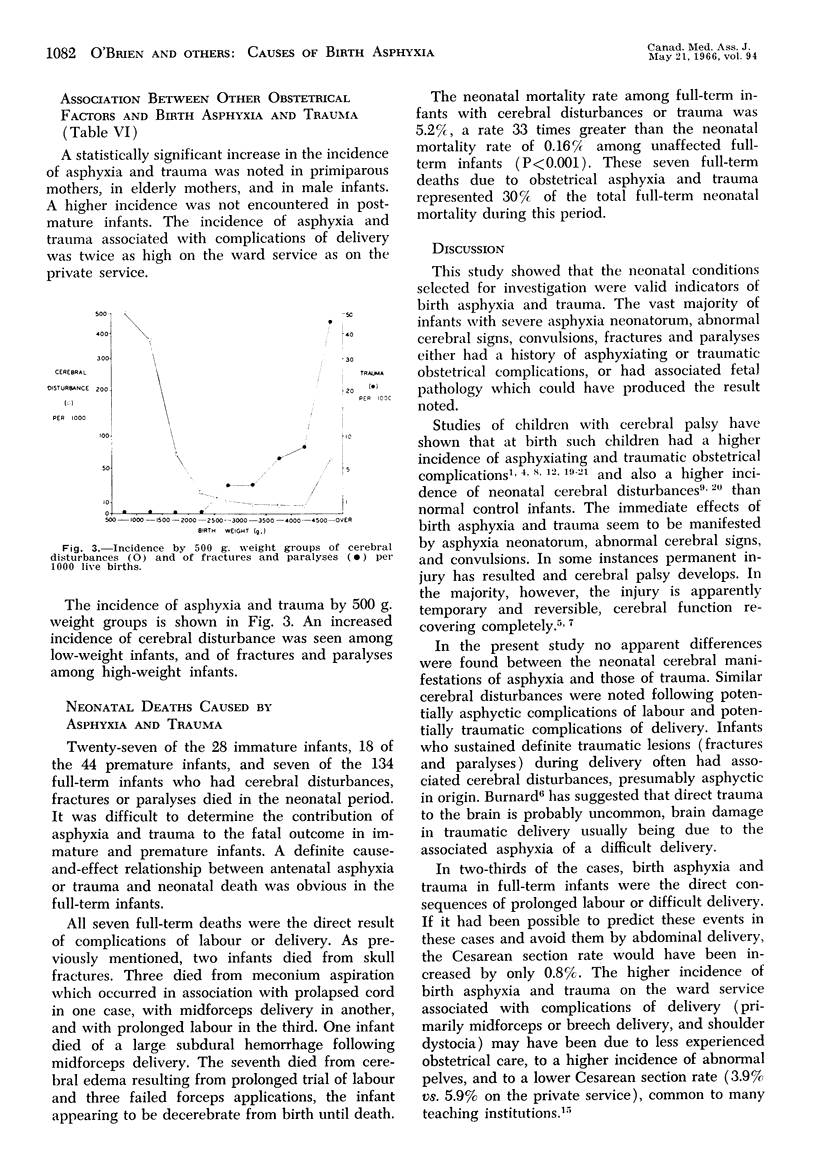
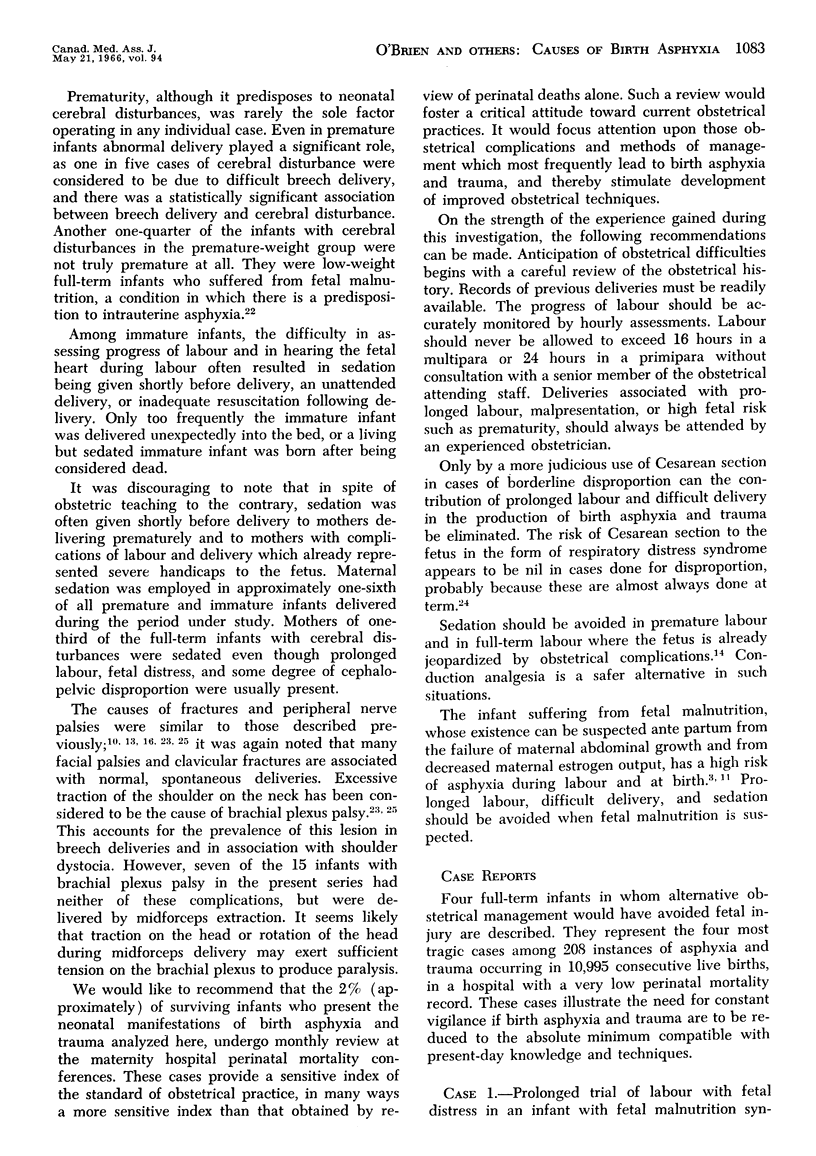
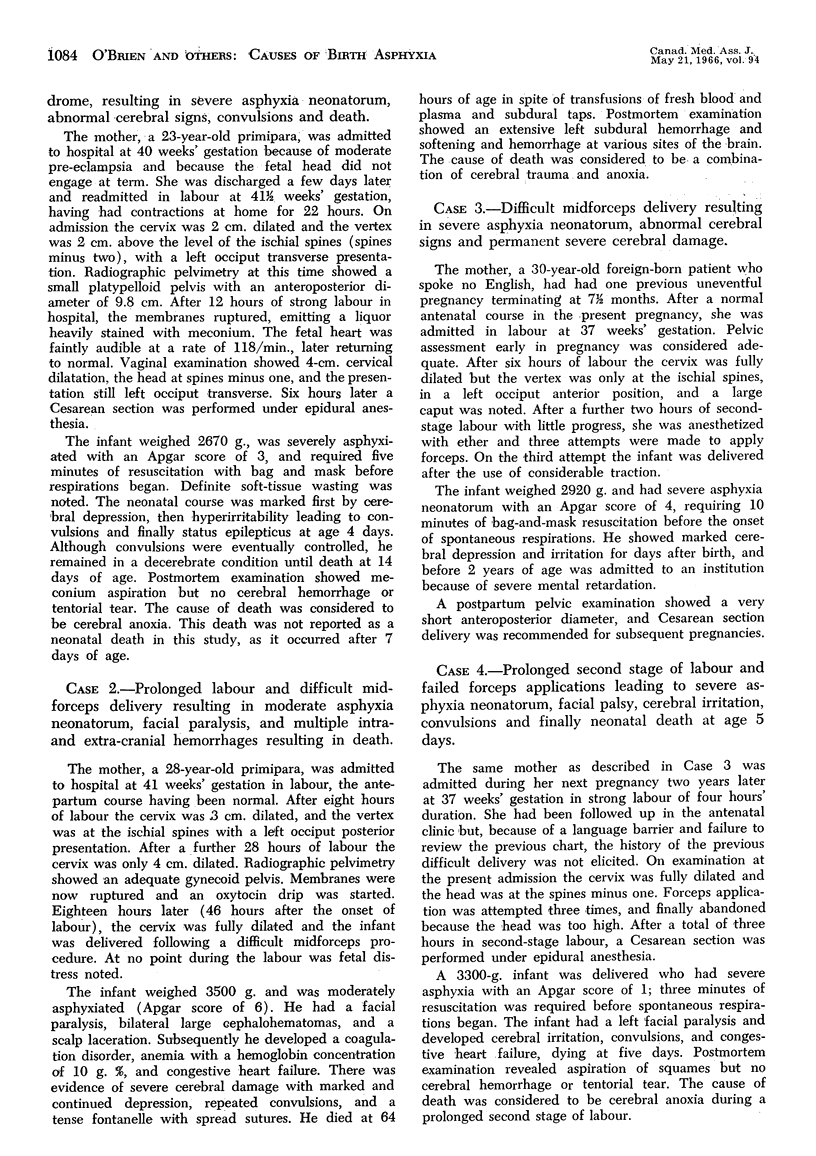
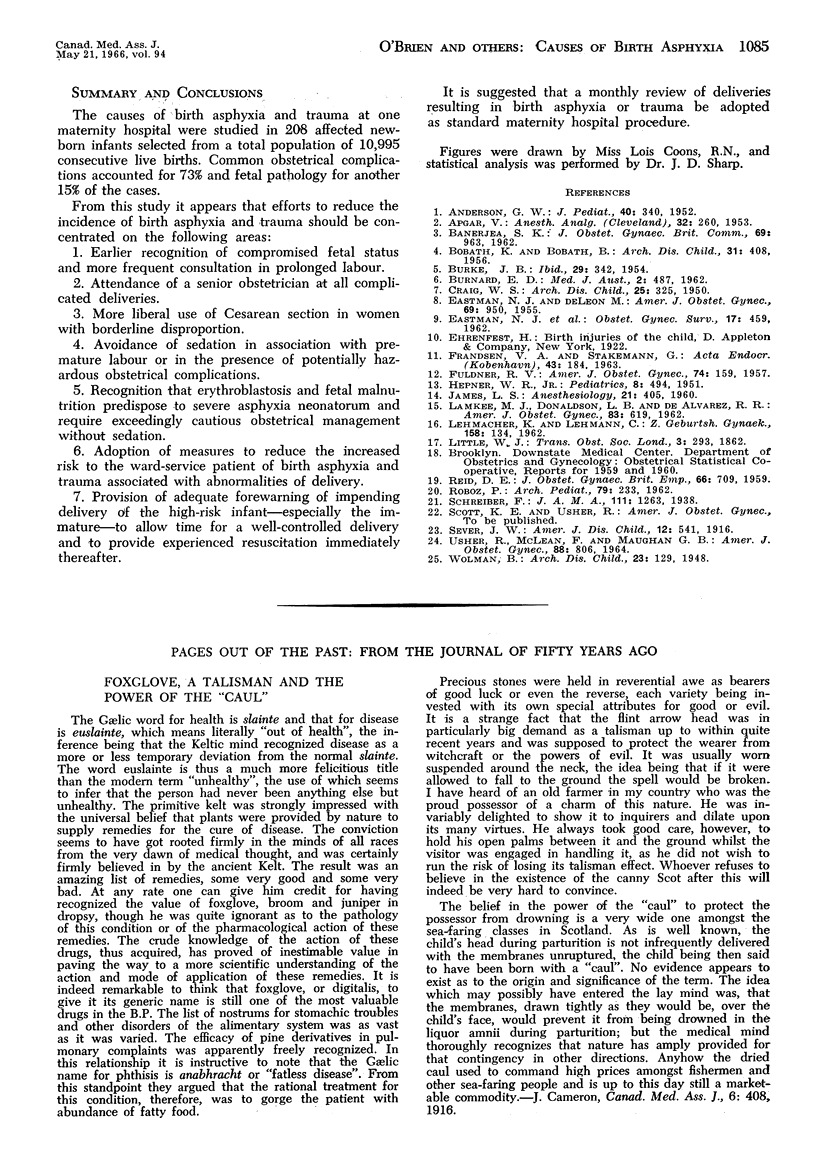
Selected References
These references are in PubMed. This may not be the complete list of references from this article.
- ANDERSON G. W. Obstetrical factors in cerebral palsy. J Pediatr. 1952 Mar;40(3):340–375. doi: 10.1016/s0022-3476(52)80269-0. [DOI] [PubMed] [Google Scholar]
- APGAR V. A proposal for a new method of evaluation of the newborn infant. Curr Res Anesth Analg. 1953 Jul-Aug;32(4):260–267. [PubMed] [Google Scholar]
- BANERJEA S. K. Index of placental function by endocrine assay and its clinical application in obstetrical practice. J Obstet Gynaecol Br Emp. 1962 Dec;69:963–978. doi: 10.1111/j.1471-0528.1962.tb01326.x. [DOI] [PubMed] [Google Scholar]
- BOBATH B., BOBATH K. The diagnosis of cerebral palsy in infancy. Arch Dis Child. 1956 Oct;31(159):408–414. doi: 10.1136/adc.31.159.408. [DOI] [PMC free article] [PubMed] [Google Scholar]
- BURNARD E. D. The relative dangers of asphyxia and mechanical trauma at birth. Med J Aust. 1962 Sep 29;49(2):487–492. [PubMed] [Google Scholar]
- CRAIG W. S. Intracranial irritation in the newborn: Immediate and long term prognosis. Arch Dis Child. 1950 Dec;25(124):325–350. doi: 10.1136/adc.25.124.325. [DOI] [PMC free article] [PubMed] [Google Scholar]
- EASTMAN N. J., DELEON M. The etiology of cerebral palsy. Am J Obstet Gynecol. 1955 May;69(5):950–961. doi: 10.1016/0002-9378(55)90094-6. [DOI] [PubMed] [Google Scholar]
- EASTMAN N. J., KOHL S. G., MAISEL J. E., KAVALER F. The obstetrical background of 753 cases of cerebral palsy. Obstet Gynecol Surv. 1962 Aug;17:459–500. doi: 10.1097/00006254-196208000-00001. [DOI] [PubMed] [Google Scholar]
- FRANDSEN V. A., STAKEMANN G. The site or production of oestrogenic hormones in human pregnancy. II. Experimental investigations on the role of the foetal adrenal. Acta Endocrinol (Copenh) 1963 Jun;43:184–194. doi: 10.1530/acta.0.0430184. [DOI] [PubMed] [Google Scholar]
- FULDNER R. V. Labor complications and cerebral palsy. Am J Obstet Gynecol. 1957 Jul;74(1):159–166. doi: 10.1016/s0002-9378(16)37016-8. [DOI] [PubMed] [Google Scholar]
- HEPNER W. R., Jr Some observations on facial paresis in the newborn infant: etiology and incidence. Pediatrics. 1951 Oct;8(4):494–497. [PubMed] [Google Scholar]
- JAMES L. S. The effect of pain relief for labor and delivery on the fetus and newborn. Anesthesiology. 1960 Jul-Aug;21:405–430. doi: 10.1097/00000542-196007000-00012. [DOI] [PubMed] [Google Scholar]
- LAMKEE M. J., DONALDSON L. B., DE ALVAREZ R. R. Analysis of cesarean sections in a teaching and a nonteaching hospital. Am J Obstet Gynecol. 1962 Mar 1;83:619–631. doi: 10.1016/s0002-9378(16)35893-8. [DOI] [PubMed] [Google Scholar]
- LEHMACHER K., LEHMANN C. [Clavicular fracture in newborn infants after spontaneous delivery in the occipital position]. Z Geburtshilfe Gynakol. 1962 Mar;158:134–165. [PubMed] [Google Scholar]
- REID D. E. Remote effects of obstetrical hazards on the development of the child: a review of the problem. J Obstet Gynaecol Br Emp. 1959 Oct;66:709–720. doi: 10.1111/j.1471-0528.1959.tb01913.x. [DOI] [PubMed] [Google Scholar]
- USHER R., MCLEAN F., MAUGHAN G. B. RESPIRATORY DISTRESS SYNDROME IN INFANTS DELIVERED BY CESAREAN SECTION. Am J Obstet Gynecol. 1964 Mar 15;88:806–815. doi: 10.1016/0002-9378(64)90616-7. [DOI] [PubMed] [Google Scholar]


